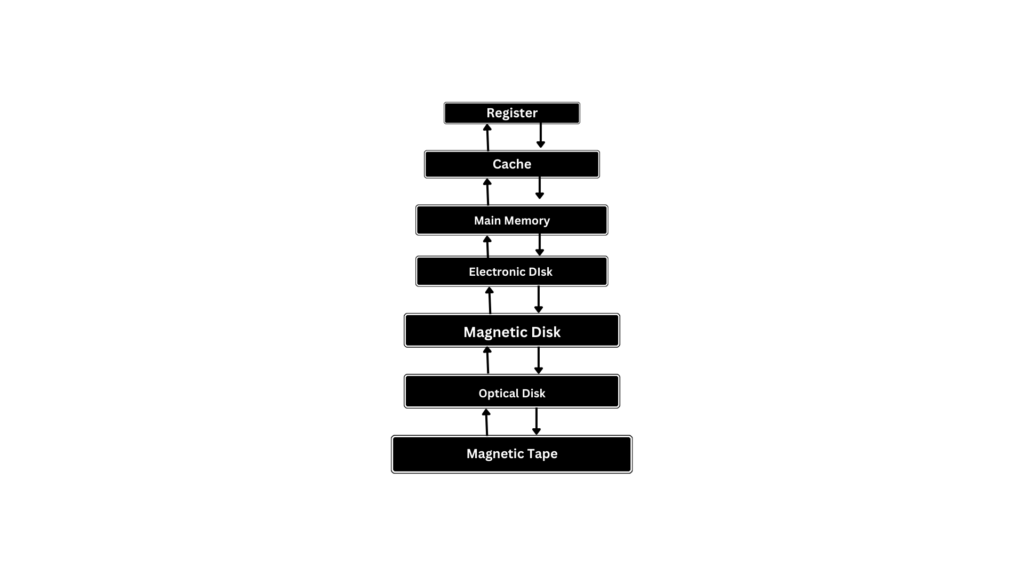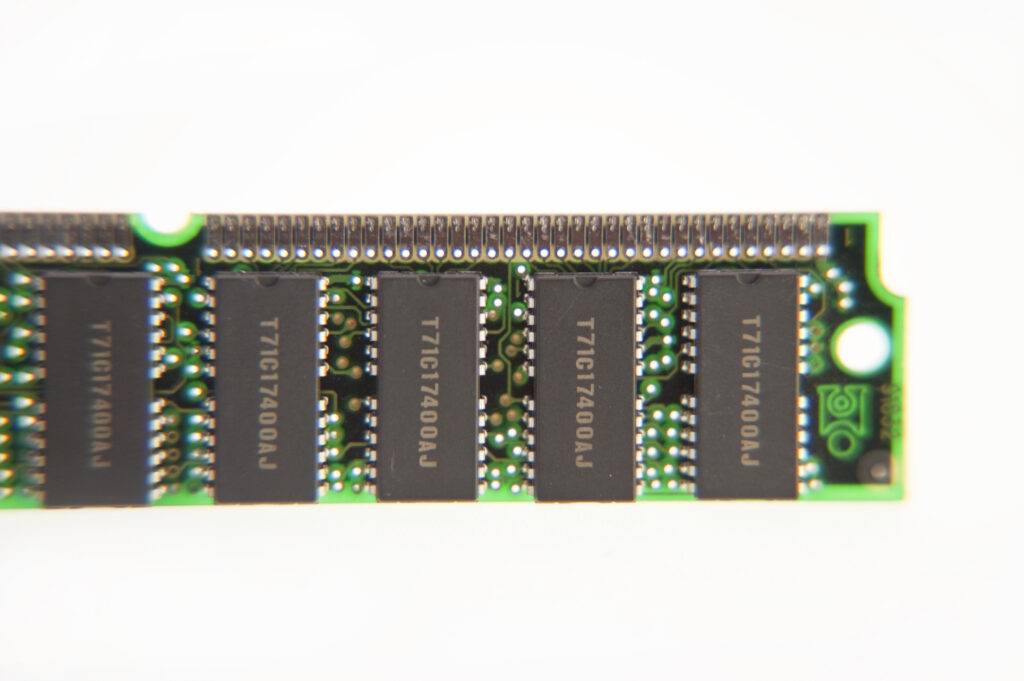Welcome to our in-depth guide on memory management in computer systems. As seasoned experts in the field of SEO and Web Development, Android IOS Development. Let’s dive straight into the world of main memory, swapping, dynamic linking, contiguous memory allocation, and much more!
Main Memory (RAM) and its Significance
Main memory, commonly known as RAM (Random Access Memory), plays a critical role in a computer system. It serves as the primary storage medium that allows the CPU to access data and instructions quickly. Understanding the fundamentals of RAM is essential to optimize memory management effectively.

What is RAM?
RAM is a volatile memory type that provides fast access to data and instructions. It is organized into memory cells, each capable of storing a specific amount of data. The CPU can read and write data to these cells directly, making it crucial for real-time operations.
Read More : Job notification Telegram Groups
Types of RAM
There are several types of RAM, including DRAM (Dynamic RAM) and SRAM (Static RAM). Each type has its advantages and applications in memory management. DRAM is cost-effective and provides higher memory capacity, while SRAM offers faster access times but is more expensive.Also in parallel Programming the Memory is Key factor
Importance of Memory Hierarchy
Memory hierarchy refers to the organization of memory types based on their speed and capacity. Understanding memory hierarchy is vital for efficient memory management. The hierarchy includes cache memory, RAM, and secondary storage (e.g., hard drives and SSDs).
Swapping: Optimizing Memory Usage
Swapping is a memory management technique that enables efficient utilization of RAM by moving data between main memory and secondary storage. When RAM becomes full, less frequently used data is swapped out to free up space for more critical operations.

How Swapping Works
When a process requires more memory than is available in RAM, the operating system identifies less active processes and transfers their data to the disk, creating space for the new process. The swapped-out data can be brought back into RAM when needed.
Pros and Cons of Swapping
Swapping allows for larger programs to run, optimizing memory allocation. However, excessive swapping can lead to performance issues due to the slower access times of secondary storage compared to RAM. Proper tuning is necessary to strike a balance.
Dynamic Linking: Efficient Memory Utilization
Dynamic linking is a memory management technique used during program execution to combine separate modules or libraries into a single, cohesive unit. This approach offers various benefits in terms of memory usage and program maintenance.
How Dynamic Linking Works
When a program is compiled, it can reference external libraries without including their code directly. During execution, the operating system links the program to the required libraries, reducing redundancy in memory usage.
Advantages of Dynamic Linking
Dynamic linking promotes code reusability, reduces memory footprint, and simplifies program updates. It enables multiple programs to share a single copy of a library, optimizing memory usage across the system.
Contiguous Memory Allocation: Enhancing Memory Efficiency
Contiguous memory allocation is a memory management scheme that assigns continuous blocks of memory to processes. This method maximizes memory usage and minimizes fragmentation.
How Contiguous Memory Allocation Works
When a process is loaded into memory, the operating system allocates a contiguous block of memory that is large enough to hold the entire process. This ensures efficient memory access and reduces the overhead of memory management.
Advantages of Contiguous Memory Allocation
Contiguous memory allocation minimizes memory fragmentation, simplifies memory deallocation, and offers faster memory access times. It is commonly used in modern operating systems due to its efficiency.
Hardware Implementation of Page Tables and TLB
Page tables and the Translation Look-aside Buffer (TLB) are hardware components responsible for virtual memory management. They play a crucial role in translating virtual addresses to physical addresses.
Page Tables: Virtual-to-Physical Address Translation
Page tables maintain mappings between virtual addresses used by processes and their corresponding physical addresses in RAM. When a process accesses memory, the CPU consults the page table to translate the virtual address to a physical address.
Translation Look-aside Buffer (TLB)
The TLB is a cache that stores frequently used virtual-to-physical address translations. It acts as a high-speed lookup table, significantly improving memory access times.
Frequently Asked Questions on Memory Management
Memory leaks occur when a program fails to release memory that is no longer needed. This can lead to gradual depletion of available memory, eventually causing system instability and slowdowns.
Example:
Imagine you are running a long-running program that continuously allocates memory but fails to free it when it’s no longer needed. Over time, the program accumulates memory leaks, causing the system to slow down or even crash due to insufficient memory.
Memory fragmentation occurs when free memory is scattered across the system, making it challenging to allocate contiguous blocks of memory for new processes. This can result in inefficiencies and reduced performance.
Example:
Consider a scenario where a system has several applications running and terminating at different intervals. Over time, memory fragmentation occurs as gaps of free memory become scattered between allocated memory. When a new application needs to be loaded, finding a large enough contiguous block of memory becomes difficult, slowing down the process loading times
Virtual memory allows processes to use more memory than physically available, increasing the system’s apparent memory capacity. However, excessive reliance on virtual memory can lead to performance degradation due to increased disk swapping.
Example:
When you have multiple applications running simultaneously, virtual memory enables each application to use more memory than what is physically available. This prevents system crashes due to running out of RAM. However, if the system relies heavily on virtual memory, excessive swapping of data between RAM and the disk can slow down the overall performance of the system.
Comparison Table: Types of RAM
| RAM Type | Technology | Access Time | Capacity | Cost |
|---|---|---|---|---|
| DRAM | Dynamic | Slower | Higher | Cost-Effective |
| SRAM | Static | Faster | Lower | Expensive |
Comparison Table: Memory Management Techniques
| Technique | Description | Advantages | Disadvantages |
|---|---|---|---|
| Swapping | Moves data between RAM and secondary storage when RAM becomes full | Allows for larger programs to run | Excessive swapping can lead to performance issues |
| Dynamic Linking | Combines separate modules or libraries during program execution | Promotes code reusability | Slightly slower program startup time |
| Contiguous Memory Alloc. | Assigns continuous blocks of memory to processes to minimize fragmentation | Minimizes memory fragmentation | Can lead to wastage of unused memory space |
| Virtual Memory | Allows processes to use more memory than physically available | Increases apparent memory capacity | Excessive reliance can lead to disk swapping |
TLB and Page Table Comparison Table
| Feature | TLB (Translation Look-aside Buffer) | Page Table |
|---|---|---|
| Purpose | Stores frequently used virtual-to-physical address translations | Maintains mappings for all virtual pages |
| Size | Relatively small cache, holds a limited number of translations | Size depends on the virtual address space |
| Access Time | Extremely fast access, due to caching nature | Slower access time compared to TLB |
| Hit/Miss Handling | Handles TLB hits and misses efficiently | Page faults occur on misses |
| Integration with MMU | Integrated into the CPU’s memory management unit | Accessed by MMU during address translation |
Memory Types Comparison Table
| Memory Type | Volatility | Speed | Capacity | Use Case |
|---|---|---|---|---|
| Cache Memory | Volatile | Extremely Fast | Small (KBs to MBs) | Temporarily stores frequently accessed data to speed up CPU operations |
| Main Memory (RAM) | Volatile | Fast | Moderate to Large (GBs) | Stores running programs and data that the CPU actively uses |
| Secondary Storage | Non-Volatile | Slower than RAM | Large (TBs to PBs) | Long-term storage for programs, data, and the operating system |
In conclusion, mastering memory management is essential for optimizing computer system performance. By implementing the concepts of main memory, swapping, dynamic linking, contiguous memory allocation, and understanding the hardware aspects of page tables, TLB, and different memory types, you can create efficient and responsive systems. Avoiding memory leaks and carefully considering virtual memory usage will further contribute to an optimized computing environment.
